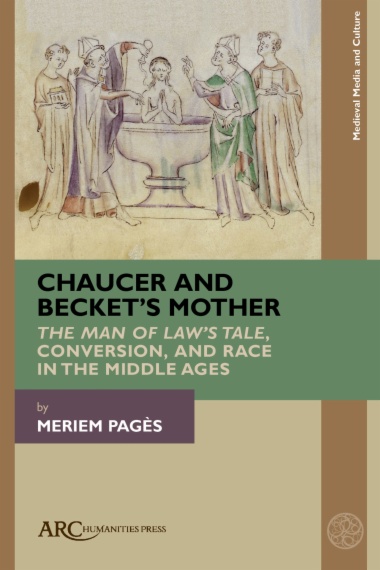Less than a hundred years after Thomas Becket’s martyrdom at the hands of four of Henry II’s knights, his Anglo-Norman mother was transformed into a pagan princess who abandoned faith and kin for Becket’s father and Christianity. Pagès uses this wholly fictional legend about the saint to examine the place and function of conversion and mission in The Man of Law’s Tale, juxtaposing the tale with the legend about Becket’s mother to assess the power (or lack thereof) of baptism in late medieval English works. This new comparative study thus provides productive insights into the complexity of the emergence of the concept of race in medieval English culture and literature.
- COVER
- CONTENTS
- LIST OF ILLUSTRATIONS
- ACKNOWLEDGEMENTS
- Introduction. DESIRE, ANXIETY, AND CONVERSION
- Chapter 1. ANXIETIES OF CONVERSION IN HIGHAND LATE MEDIEVAL LITERATURE
- Chapter 2. THOMAS BECKET’S MOTHER
- Chapter 3. THE BECKET LEGEND, THE MAN OF LAW’S TALE, AND CONVERSION
- Chapter 4. THE MAN OF LAW’S TALE IN CONTEXT
- CONCLUSION
- BIBLIOGRAPHY
- INDEX

